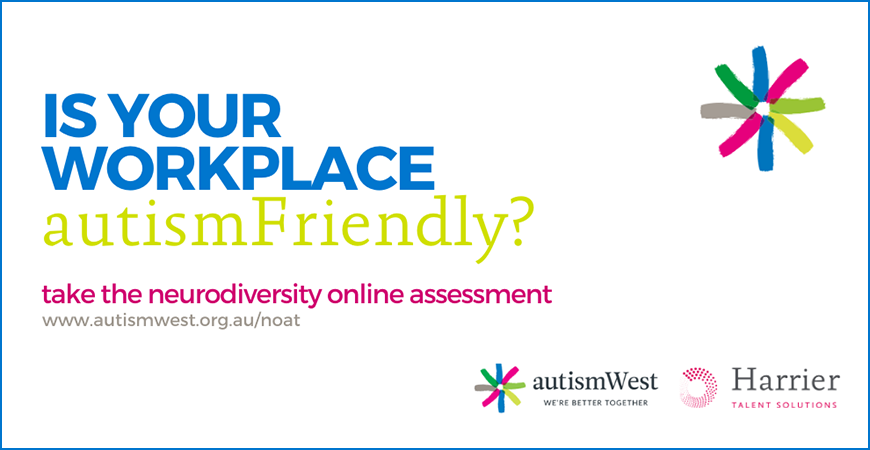Is your workplace autism friendly? Here’s a tool to help remove barriers for neurodiverse candidates.

There are more than 157,000 people with autism of working age in Australia.
Most of these people are intelligent and keen to work, yet they face significantly higher rates of unemployment compared to neurotypical people, and more than three times that of people with disability.
We are overlooking a huge Talent pool of creative thinkers, innovators, problem solvers and curious learners – why?
Mostly, it is because autism is poorly understood. It is a complex spectrum of different strengths and challenges relating to communication, executive functioning, memory, sensory processing, unique patterns of behaviour and attention to detail.
Furthermore, it is a condition that you can’t see, so unless a person is comfortable to share with you that they have autism, you might not be aware.
It is also because modern workplaces are difficult to navigate for people who respond to the world around them differently. From highly structured and automated recruitment processes to open plan offices – we have created barriers to employment for neurodiverse people that, with a little creativity, could be easily addressed.
However, the good news is that this does not need to be difficult or expensive, and it is likely to foster a more inclusive environment that is beneficial for all employees.
The team at Harrier Talent Solutions has partnered with Autism West to develop a first-of-it-kind free online assessment tool for HR and Talent leaders, to help establish a solid foundation for a neurodiversity strategy.
It is designed to show how simple workplace and recruitment process adjustments can significantly improve employment outcomes for people with autism and other neurological conditions, and it is supported by a comprehensive training program that we have developed to address key stages of the employee lifecycle.
I feel very strongly that autism employment programs and initiatives that are limited to entry-level positions or roles in STEM are missing the mark.
I’m hopeful that the assessment tool developed, together with supporting training program designed by Autism West, will help us to move beyond this and focus on hiring process, team and workplace design that will support neurodiverse people pursue any career that they are passionate about.
For my son who is living with autism, that is a rock guitarist or a CFO – maybe he can be both. I have about eight years until he enters the workforce. I am keeping my fingers crossed that it’s ready for him.
I would love for the ATC community to try the tool (it’s FREE!) and if you have any feedback you would like to share, please drop me a line here.
If you would like more information on autism and neurodiversity, you can download Harrier’s recent report and handy recruitment strategy-on-a-page, here.

This article is contributed by Harrier Talent Solutions.
Related articles
One Response to “Is your workplace autism friendly? Here’s a tool to help remove barriers for neurodiverse candidates.”
Leave a Reply
Sign up to our newsletter
Get a weekly digest on the latest in Talent Acquisition.
Deliver this goodness to my inbox!



need to know more about autism in any workplace setting.